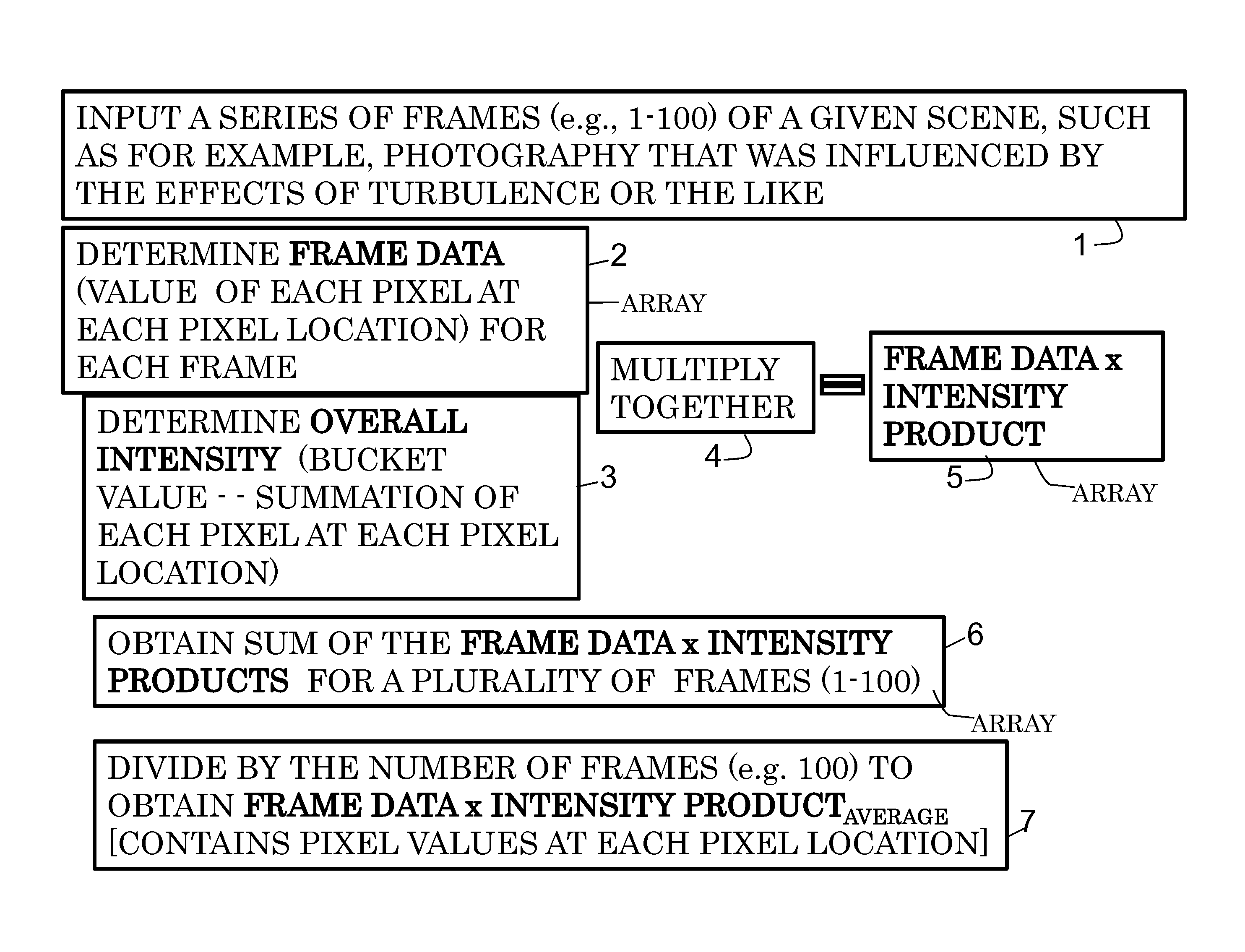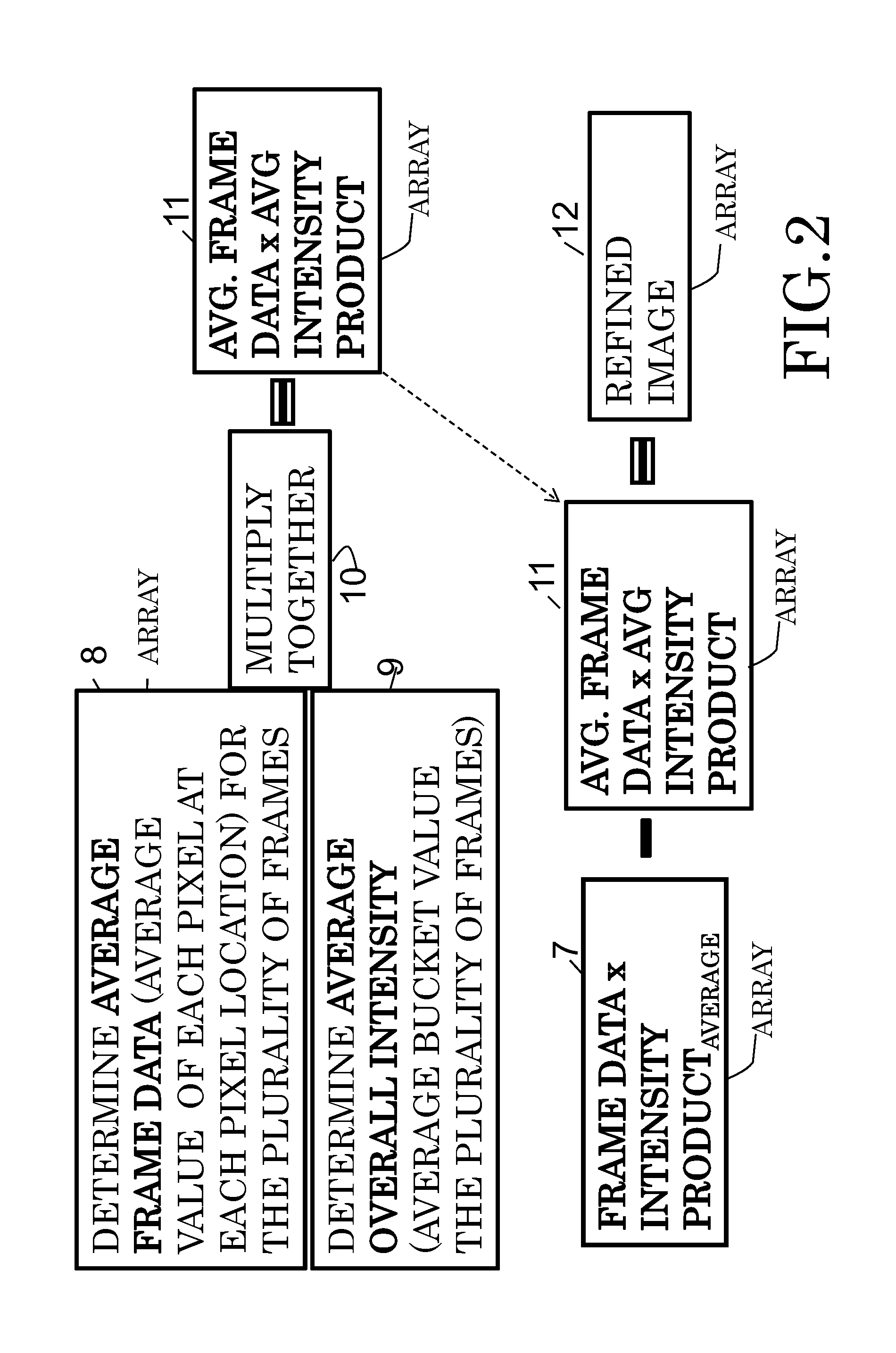System and processor implemented method for improved image quality and generating an image of a target illuminated by quantum particles
a technology of quantum particles and image quality, applied in image enhancement, image analysis, instruments, etc., can solve problems such as poor image quality, and achieve the effect of improving image quality
- Summary
- Abstract
- Description
- Claims
- Application Information
AI Technical Summary
Benefits of technology
Problems solved by technology
Method used
Image
Examples
embodiment 100
[0165]FIG. 19A illustrates a diagram of alternate preferred embodiment 100, that generates enhanced averaged second-order images or movies of a region of interest. Note, the region of interest may emit photons that are not reflected or scattered photons from some other photon source. A photon source (labeled source) may include, for example, the sun, moon, coherent, incoherent, or partially coherent light, entangled photons, infrared radiation emitted by atoms and molecules, accelerating charges, lasers, light bulbs, light emitting diodes (LEDs), chaotic laser light, pseudo-thermal light generated by passing laser light through a rotating ground glass or other scattering material, stars, moons, clouds, planets, space objects, fluorescent lamps, electrical discharges, plasmas, bio-luminescence, and stimulated emission. The distant target scene 101 comprises a target 102 which is an area used of the distant target scene for the particular region of interest developed for image testing...
case 1
[0223] As an example assume that an ensemble of measurements is made at location (a) and location (b). For this case assume that the ensemble consists of two measurement realizations 1 and 2. For realization 1, Ia(1)=8 and Ib(1)=8. For realization 2, Ia(2)=2 and Ib (2)=2. G(2)=aIb>−a>b>, where indicates and average over the ensemble of realizations. For this ensemble, G(2)=34−25=9. Examining Ia and Ib it is easy to see that the values of both of the measurements decrease at the same and typically referred to as correlated.
case 2
[0224 In a case where the ensemble of measurements is made at location (a) and location (b) for realizations 1 and 2, Ia(1)=2, Ia(1)=8 and Ib(1)=8, Ib(2)=2. Then G(2)=16−25=−9. In this example Ia increases in magnitude from 2 to 8 while Ib decreases from 8 to 2. This is typically referred to as anti-correlated.
Multiple Buckets on Same Image
[0225]Bucket pixels can be allocated down to an individual pixel or a group of pixels in particular frames. The pixels in a group of pixel selected to be summed to a bucket (integrated intensities) value for a frame need not be contiguous. The bucket pixel or pixels may also be chosen on a per-frame basis. For instance, all pixels within 10% of the maximum pixel value for a frame may be chosen to be summed over for the bucket value for that frame. The spatial distribution of those pixels within 10% of the maximum pixel value is likely to change from frame to frame based on lighting conditions and turbulence / obscuration effects between the target a...
PUM
 Login to View More
Login to View More Abstract
Description
Claims
Application Information
 Login to View More
Login to View More - R&D
- Intellectual Property
- Life Sciences
- Materials
- Tech Scout
- Unparalleled Data Quality
- Higher Quality Content
- 60% Fewer Hallucinations
Browse by: Latest US Patents, China's latest patents, Technical Efficacy Thesaurus, Application Domain, Technology Topic, Popular Technical Reports.
© 2025 PatSnap. All rights reserved.Legal|Privacy policy|Modern Slavery Act Transparency Statement|Sitemap|About US| Contact US: help@patsnap.com



